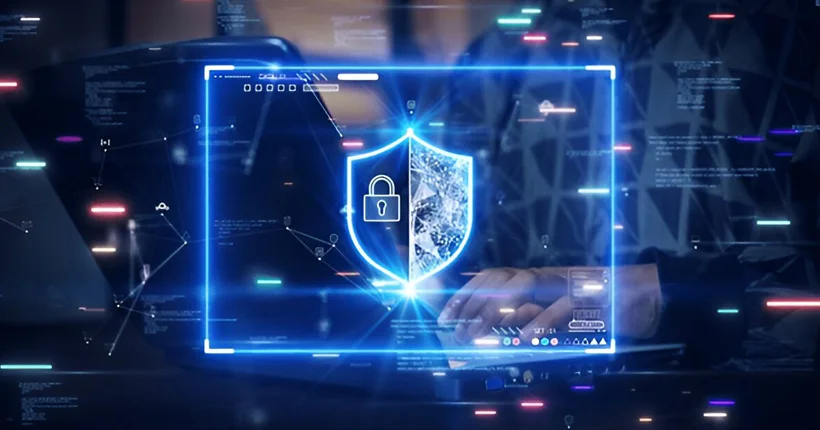
Artificial intelligence and cybersecurity
-
February 21, 2025

Cyber threats are becoming more sophisticated, making traditional security measures ineffective. Artificial Intelligence (AI) is transforming cybersecurity by detecting, preventing, and responding to attacks faster than ever. AI-driven systems analyse vast amounts of data in real time, identifying patterns and anomalies that humans might miss. From automated threat detection to predictive analysis, AI strengthens security defences against evolving cyber risks. This blog explores AI’s role in cybersecurity, its applications, benefits, and how to get started. Understanding AI in cybersecurity is crucial for individuals and businesses looking to stay ahead of cybercriminals and protect their digital assets.
What is artificial intelligence in cybersecurity?
Artificial Intelligence (AI) in cybersecurity refers to the use of machine learning, automation, and data analysis to detect, prevent, and respond to cyber threats. Traditional security methods rely on predefined rules, but AI enhances cybersecurity by learning from patterns, adapting to new threats, and predicting attacks before they happen.
AI-powered systems analyse vast amounts of data in real time, identifying unusual behaviours that may indicate cyberattacks. Machine learning algorithms recognise patterns of normal and malicious activity, reducing false alarms and improving threat detection accuracy. AI also strengthens endpoint security, preventing malware, phishing, and social engineering attacks.
One of AI’s key roles in cybersecurity is automating responses to cyber threats. Instead of waiting for human intervention, AI can instantly isolate infected systems, block malicious traffic, and patch vulnerabilities. This speeds up incident response and minimises damage.
Another essential function is risk assessment. AI evaluates security risks by scanning networks, identifying weak points, and predicting potential breaches before they occur.
With cyber threats evolving rapidly, AI-driven cybersecurity provides a proactive defence system that adapts in real time, making it an essential tool for businesses and individuals to stay protected.
How AI is Used in Cybersecurity
AI enhances cybersecurity by detecting threats, automating responses, and predicting attacks before they happen. Traditional security measures rely on static rules, but AI-powered systems continuously learn from data, adapting to new cyber threats in real time.
- Threat Detection: AI scans massive amounts of data to identify patterns and anomalies. Machine learning models can detect suspicious activities, such as unauthorised access or unusual network behaviour, helping prevent cyberattacks before they escalate.
- Incident Response: AI automates security responses, reducing reaction time. When a threat is detected, AI can isolate compromised systems, block malicious IP addresses, or trigger alerts for security teams, minimising damage.
- Risk Assessment: AI evaluates vulnerabilities by analysing network behaviour, user activities, and software weaknesses. It predicts potential breaches and recommends security improvements to prevent attacks.
- Behavioural Analysis: AI detects abnormal user behaviour that might indicate insider threats, phishing attempts, or malware infiltration. It continuously adapts to new attack methods, making security systems more resilient.
By combining speed, accuracy, and automation, AI strengthens cybersecurity defences, protecting businesses and individuals from ever-evolving cyber threats.
How to Start with AI in Cybersecurity
Getting started with AI in cybersecurity requires a mix of learning, hands-on experience, and the right tools. Here’s how to begin:
- Learn the Basics—Understand fundamental concepts of AI, machine learning, and cybersecurity. Platforms like Coursera, Udemy, and edX offer courses on AI-driven security.
- Explore AI Security Tools—Start using AI-powered cybersecurity solutions like IBM Watson Security, Darktrace, CrowdStrike, and Microsoft Defender. These tools help detect and mitigate cyber threats in real time.
- Gain Hands-On Experience—Experiment with AI security models by working with datasets from platforms like Kaggle. Try building simple machine learning models to detect malware, phishing, or network anomalies.
- Understand Cybersecurity Frameworks— Learn security compliance standards like NIST, GDPR, and ISO 27001 to ensure AI solutions align with best practices.
- Implement AI in Security Strategies—Integrate AI into existing security infrastructures to automate threat detection, improve response time, and reduce human errors.
- Stay Updated—Cyber threats evolve rapidly. Follow cybersecurity blogs, research papers, and industry reports to keep up with the latest AI advancements.
By mastering these steps, you can leverage AI to strengthen cybersecurity defences and stay ahead of modern threats.
Benefits of AI in Cybersecurity
AI is transforming cybersecurity by making it faster, smarter, and more efficient. Here’s how:
- Real-Time Threat Detection—AI analyses vast amounts of data instantly, identifying cyber threats before they cause damage. Unlike traditional systems, AI detects hidden patterns and anomalies, reducing attack risks.
- Faster Incident Response—AI automates security responses, stopping attacks in seconds. It isolates compromised systems, blocks malicious traffic, and alerts security teams, minimising downtime and potential losses.
- Improved Accuracy—AI reduces false positives by distinguishing between normal and suspicious activities. This allows security teams to focus on real threats instead of wasting time on unnecessary alerts.
- Predictive Threat Analysis—AI forecasts potential cyberattacks by studying past attack patterns. This proactive approach helps businesses strengthen security before an attack happens.
- Enhanced Endpoint Security—AI detects malware, phishing attempts, and unauthorised access attempts, securing devices and networks without human intervention.
- Cost and Time Efficiency—AI automates repetitive security tasks, reducing the need for manual monitoring. This lowers operational costs while improving overall cybersecurity effectiveness.
With AI-driven security, businesses and individuals can stay ahead of evolving cyber threats, ensuring stronger and more adaptive protection.
Conclusion
AI is revolutionising cybersecurity by providing real-time threat detection, automated responses, and predictive analysis. It enhances accuracy, reduces manual effort, and strengthens defence systems against evolving cyber threats. Businesses and individuals can leverage AI-powered security tools to protect data, networks, and digital assets more effectively. As cyberattacks grow more sophisticated, integrating AI into cybersecurity is no longer optional—it’s essential. Embracing AI-driven security solutions ensures a proactive, adaptive, and resilient defence against modern cyber risks.
FAQ
1. How does AI improve cybersecurity?
AI enhances cybersecurity by detecting threats in real time, automating responses, and predicting future attacks. It analyses large datasets, identifies anomalies, and reduces false positives, allowing security teams to focus on real threats.
2. Can AI completely replace human cybersecurity experts?
No, AI cannot replace human cybersecurity experts. While AI automates many security tasks, human oversight is necessary for decision-making, handling complex threats, and adapting security strategies. AI works best as a powerful tool alongside human expertise.
3. What are the main types of AI used in cybersecurity?
- Machine Learning (ML): Learns from data to detect threats.
- Deep Learning: Identifies advanced attack patterns.
- Natural Language Processing (NLP): Detects phishing and fraudulent communications.
- AI-Powered Automation: Responds to threats in real time.
4. Is AI in cybersecurity expensive?
AI-powered security solutions can be costly, but they save time and resources by automating threat detection and response. Many cloud-based AI security tools offer scalable pricing, making them accessible for businesses of all sizes.
5. How can I start using AI in cybersecurity?
Learn the basics of AI and cybersecurity, explore AI security tools like IBM Watson, Darktrace, or CrowdStrike, and stay updated on cybersecurity trends. Implement AI-driven solutions into existing security frameworks for better protection.
You May Also Like
-
Feb 19, 2025
-
Feb 19, 2025

